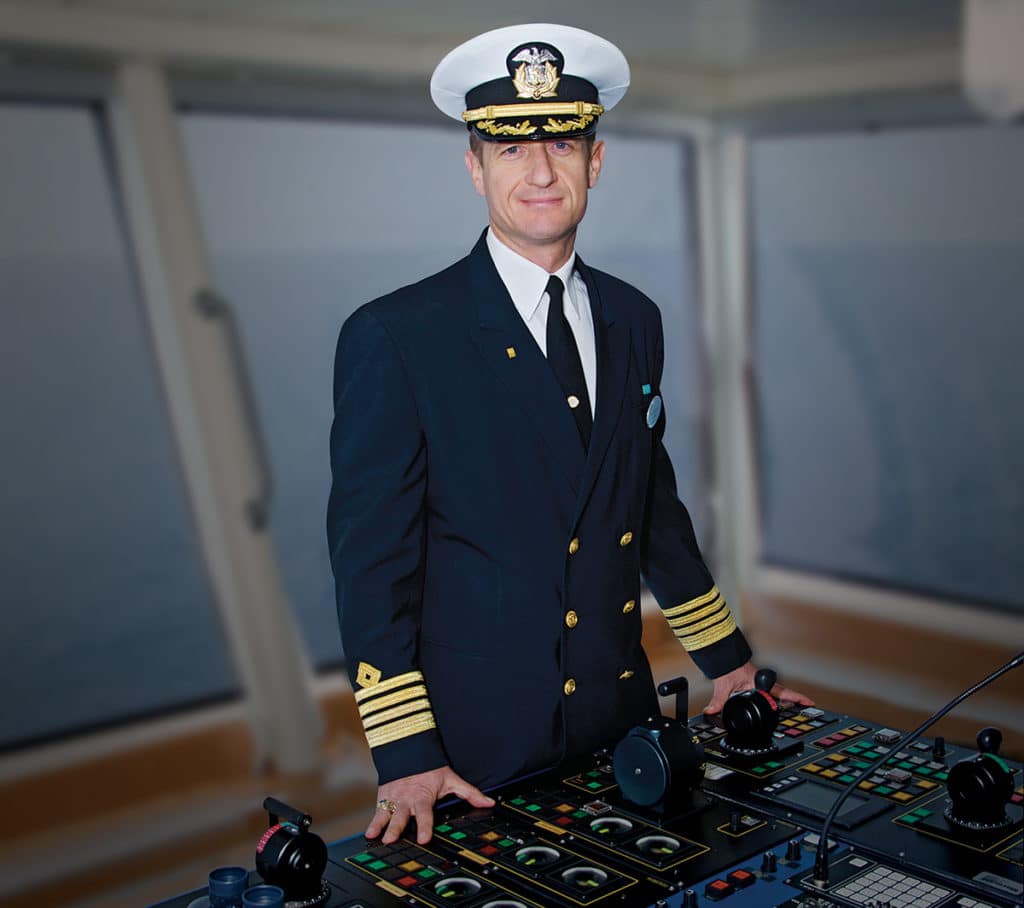
Has docking ever been a challenge for you? Imagine trying to dock Pride of America, the massive, 921-foot-long, 80,000-plus-gross-ton cruise ship from Norwegian Cruise Line. As captain of the ship, Ron Chrastina does it practically every day with more than 2,000 passengers on board. We asked him what it’s like. — Joe Friedman
Bringing the America in must be quite a challenge, wouldn’t you say?
Well, it’s really just a matter of scale. I use all the same principles any captain would use. Tide state, current and wind are the big variables. Being 12 stories above the water gives me great visibility, but the downside to that is windage, and that can be a serious concern — big winds can be big trouble.
You must have quite a bit of help doing the maneuvers.
Although we have more than 900 crew members, only a handful are actually involved in handling the ship. The rest tend to hotel-like duties, designed for the passengers’ comfort. My navigation team consists of the officer of the watch and junior officer of the watch, a lookout, my staff captain (second in command) and my chief officer (just for good measure) — and I do have a tug standing by in case I need a push or nudge. Mostly, though, it’s experience with a large dose of anticipation of prevailing conditions.
OK, so how do you maneuver?
There are six diesel-powered generators that supply the power, though we don’t generally use more than four of them at a time. They provide the electricity that runs the two forward-facing props mounted on 360-degree rotatable Rolls-Royce Mermaid pods. They also send power to any or all of the three bow thrusters when needed. Since the pods can rotate through a complete circle at slow speeds, I can use them for forward and aft propulsion as well as a stern-thruster. I generally enter the harbor channel at around 5 knots, which is enough to give me positive steerage to get around bends and turns. Once we’re making the final approach to our berth, I engage the thrusters and usually only one of the pods to slide onto the pier.
Sounds simple. Do you ever have any problems?
Sure. We’re a big ship and that means we can occasionally have big concerns. That’s why I keep a tug handy, but for the most part we don’t require its assistance. I can stop the America from 3 knots to dead in the water in less than a ship length. We have our own onboard computer-driven simulator with complete command and control graphics for all of the harbors we visit, so we can stay sharp and practice in a variety of weather conditions without risking any real-world damage.
How about shoving off? Is it just as easy?
Pretty much. Normally I try to just push off parallel to the pier using one of the pods and the thrusters. Sometimes the wind conditions will dictate that we should move either the bow or stern off first and then, once we’re clear, either power forward or, if the stern is off first, back out to clear water and turn to the harbor entrance.
You make it sound like no big deal.
I don’t mean to make it seem that way, but after working the simulator for hours and then actually docking and leaving a couple of hundred times, it does become kind of routine. I can assure you, though, with all our experience, we are never overconfident. I know that “stuff” happens, and I am constantly watching out and trying to anticipate the possibilities just like any captain, no matter how large or small his vessel is, can and should be doing.









